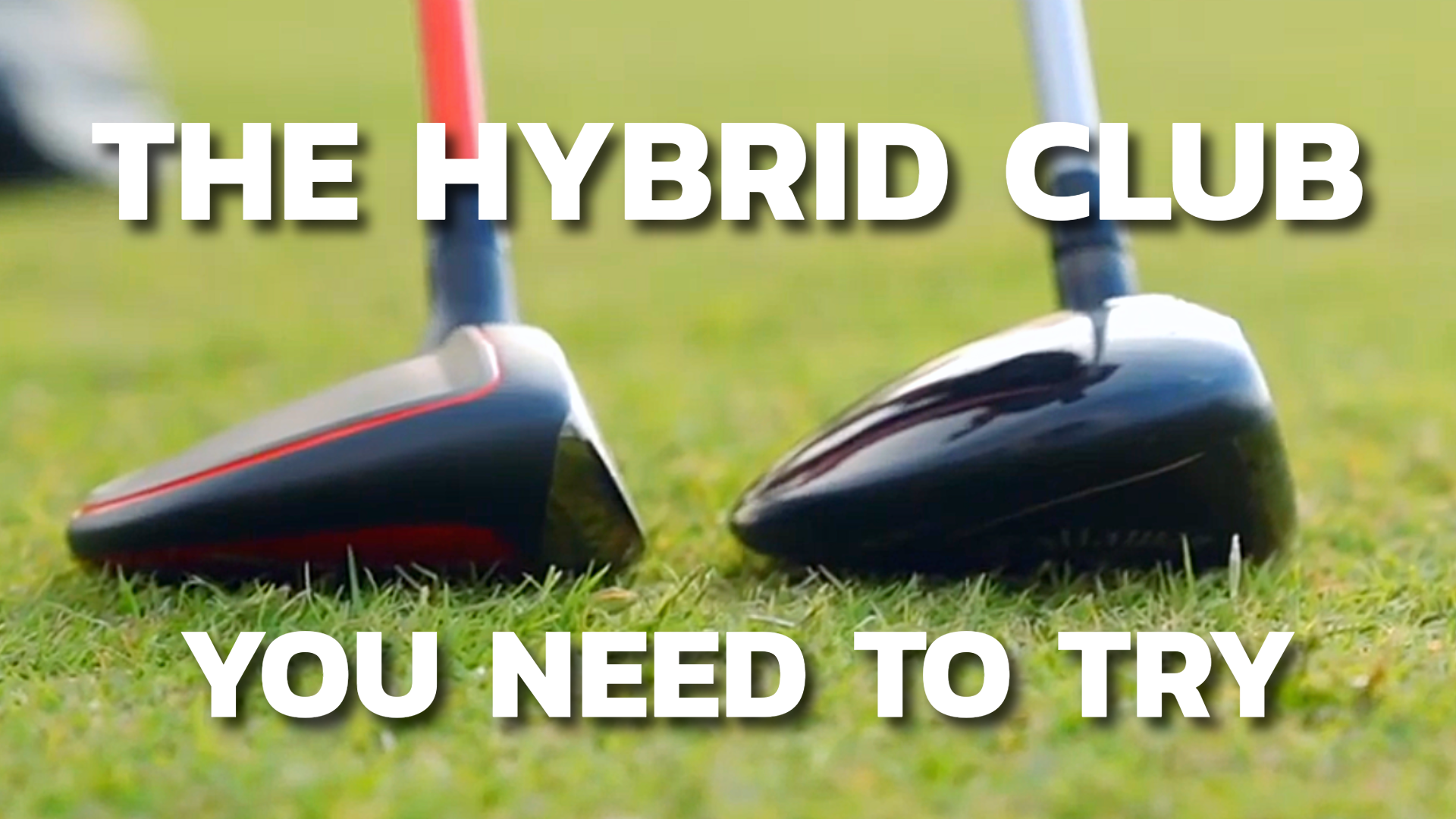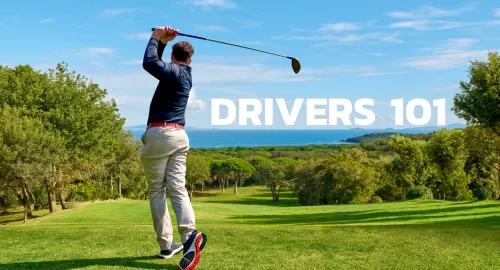
If you’re like most golfers, you probably struggle with long irons and hitting fairway woods off the deck. For many players, these clubs require pinpoint contact and higher swing speed to perform well—two things that can be inconsistent even for experienced golfers.
That’s where hybrid clubs step in, offering a solution that blends distance, forgiveness, and versatility. But as you’ll see, not all hybrids are created equal and it’s confusing at times to know which one is right for you.
The Truth About Hybrid Clubs
So, why are hybrids such a good choice for most golfers? Let’s start by comparing them with other common longer clubs in the bag.
Long irons like the 3–5 irons have small, thin clubfaces and less loft, making it harder for most golfers to get the ball airborne. Mishits tend to lose significant distance and veer offline, which can be discouraging from long range. Not to mention, using a standard iron shaft makes it even more difficult to square the face at impact.
A 3 or 4-wood isn’t much different for amateur golfers. These clubs are a decent option off the tee, especially if you’re struggling with driver. But hitting them from the fairway is no easy feat due to the length and low amount of loft (why 5- or 7-woods are often better off the deck).
Both long irons and 3-woods are less forgiving by design, meaning you need near-perfect execution to see great results. For many weekend warriors, that combination can lead to frustration and missed opportunities on the course.
The Case for Switching to a Hybrid
Luckily, golf manufacturers realized that most golfers need some help in this area and designed a hybrid golf club that covers all the bases. These clubs are engineered to make the game more accessible, even if you’re a casual player. Even the pros and low handicap amateurs use them as a long iron alternative.
With a lower center of gravity, a wider sole, and perimeter weighting, these clubs launch the ball higher and with less effort. This higher trajectory makes it easier to hold greens on longer approach shots and get the ball airborne even on mishits.
While their forgiving face design minimizes distance loss on off-center strikes, keeping you in play more often. Plus, the shaft is graphite, unlike long irons, making it easier to swing consistently well. And perhaps most importantly, these clubs will help build your confidence.
Standing over a hybrid, you see a friendlier, more compact head shape than a fairway wood, but with more playability than a long iron. If you’re like most players and struggle with traditional long clubs, hybrids often feel like an instant upgrade.
Versatility: The Hybrid’s Biggest Secret Weapon
One of the biggest advantages of a hybrid club is its ability to shine in multiple situations.
- Off the tee, it’s a fairway finder you can trust when accuracy matters more than distance.
- From the fairway, the design makes it easy to launch the ball high, giving you a better chance to hold the green on longer approaches.
- In the rough, the club’s sole and head shape help it glide through grass more effectively than a long iron, making recovery shots far less daunting.
Hybrids can even be used for specialty shots like bump-and-runs around the greens. Or, low punch-outs under tree branches, proving their value well beyond standard full swings.
Spotlight on the 357 Fairway Hybrid
I’m sure you’re already thinking about how the benefits can help your game, but how do you choose the best hybrid? Our latest 357 Fairway Hybrid is a wildly popular choice among amateur golfers due to its unique design. It’s different from a traditional hybrid, like the AnyLie which is also a fantastic choice.
The 357 Fairway Hybrid takes all the benefits of hybrid design and packages them into a club that’s particularly beginner- and mid-handicap-friendly. It was designed to replace those tricky-to-hit long irons and fairway woods, as it combines the control of an iron with the forgiveness of a fairway wood.

Its loft and head profile are designed for all lies—whether you’re on the tee box, fairway, or buried in the rough. If you’re looking to add your first hybrid, the 357 is a perfect option. The consistent launch, dependable distance, and forgiving design will give you confidence to attack shots that you might have once played defensively.
When to Choose a Hybrid Over Other Clubs
There are plenty of situations where a hybrid is the smarter choice over a long iron or fairway wood.
- On long par 3s, the extra height and softer landing can be the difference between hitting the green or having to scramble.
- On par 4s, the 357 can help off the tee if it’s a narrow fairway or attack the green on longer holes.
- On par 5s, it’s perfect for setting up an easy third shot or even going for the green in two when you need both carry and control.
- Hybrids are also excellent for escaping trouble—whether you’re punching out from the trees or need to carry a penalty area but don’t trust a lower-lofted club to get airborne.
Mindset Shift: Let the Club Do the Work
One of the biggest changes you might experience when switching to a hybrid is realizing you don’t have to swing harder to get better results. The design of the club—loft, weight distribution, lightweight shaft, and face technology—does much of the heavy lifting.
Instead of forcing the ball into the air like an iron, a smooth, controlled swing lets the club’s technology work for you. This not only improves consistency but also helps reduce tension and focus on good tempo.
Keep your swing smooth and controlled; you don’t need to over-swing to get maximum performance. Many golfers also find that replacing multiple long irons with hybrids creates more consistency and confidence in their long game.
Making the most out of a hybrid club comes down to practice and familiarity. Start by hitting it from a variety of lies—tee, fairway, light rough, and heavy rough—to understand how it reacts in different conditions. It’s also a good idea to schedule a gapping session to learn exactly how far you hit the hybrid compared to the rest of your clubs.

